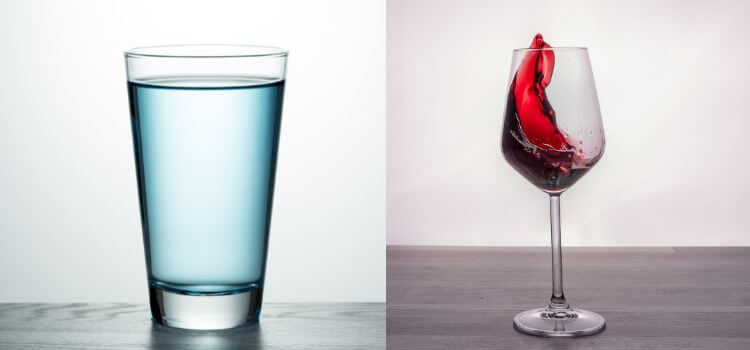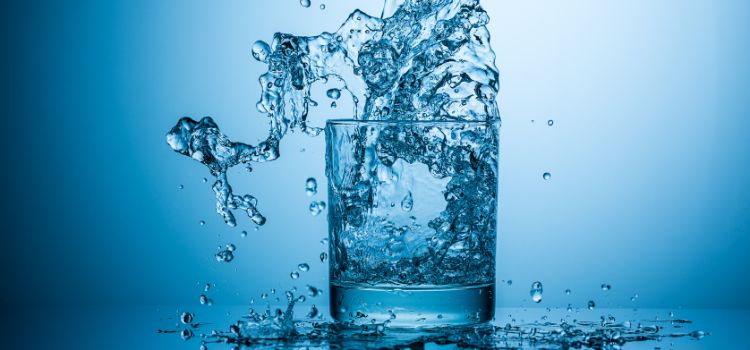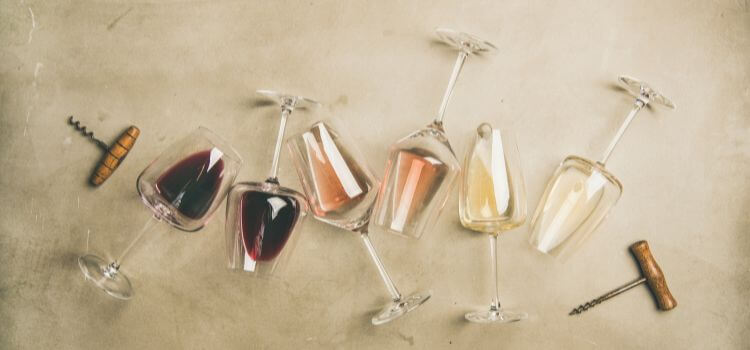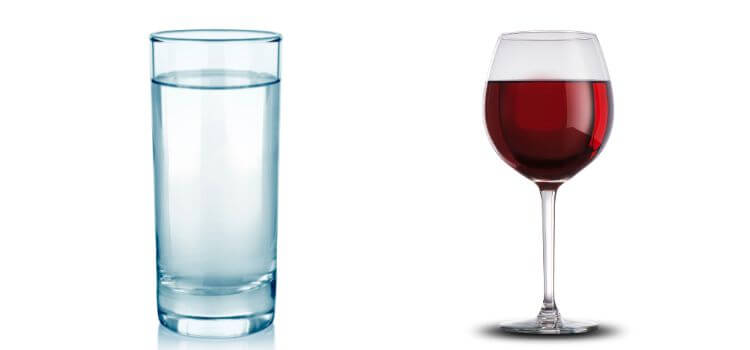As an Amazon Associate, I earn from qualifying purchases

Regarding serving beverages, the choice of glassware can significantly impact the drinking experience. This article explores the nuanced debate surrounding the choice between a water glass and a wine glass. From the shape and size to the material and design, each type of glass uniquely enhances the flavors and aromas of the beverages they hold.
Join us as we explore the nuances of choosing the right glass for your favorite drinks and uncover the secrets behind why the vessel matters just as much as the liquid it contains.
Water Glass Characteristics:

Common shapes and designs of water glasses:
- Tall and cylindrical
- Short and wide (tumbler)
- Stemless
- Flared at the top
Material used for water glasses:
Water glasses are commonly made of glass or crystal, which is known for its clarity and ability to enhance the appearance of beverages. Some modern variations also use plastic or acrylic material.
Functionality and versatility:
Water glasses are designed for practicality and everyday use. Their simple and functional design allows them to hold a large volume of liquid, making them suitable for hydrating throughout the day. Water glasses are versatile and can serve various drinks, such as juices, sodas, or cocktails.
Ideal occasions:
Water glasses are best suited for casual settings and everyday use. They are ideal for family meals, picnics, or outdoor gatherings where functionality and durability are key.
Wine Glass Characteristics:

Varieties of wine glasses based on wine types:
- Red wine glass (bowl-shaped with a wide opening)
- White wine glass (narrower and taller than red wine glass)
- Champagne flute (tall, narrow, and flute-shaped)
- Dessert wine glass (small and narrow)
Stemmed vs. stemless wine glasses debate:
Their design is the most significant difference between water glasses and wine glasses. While water glasses are commonly stemless, wine glasses come with a stem. The debate over stemmed vs. stemless glassware is ongoing, with some arguing that the stem allows for a better grip and prevents the heat from hands from affecting the temperature of the wine.
Others argue that it’s simply a matter of personal preference and that stemless glasses are more modern and aesthetically pleasing.
Material used for wine glasses:
Traditionally, wine glasses are made of glass or crystal, similar to water glasses. However, options are also made from other materials, such as stainless steel or plastic.
Functionality and versatility:
Wine glasses are designed specifically for enhancing the sensory experience of drinking wine. The design and dimensions of the glass are pivotal in guiding the wine to various parts of the mouth, allowing for better taste and aroma perception. Wine glasses are not typically used for other types of beverages.
Ideal occasions:
Wine glasses are best suited for more formal or special occasions such as dinner parties, date nights, or wine tastings. They add an elegant touch and elevate the drinking experience.
Impact of wine glass design on wine tasting experience:
The design of a wine glass can significantly impact the overall tasting experience. The bowl shape, size, and rim diameter affect how the drinker perceives the wine. For example, a wide-rimmed glass allows more air to come in contact with the wine, enhancing its aroma.
On the other hand, a narrower rim concentrates the aromas and directs them towards the drinker’s nose. The shape of the bowl also affects how the wine is tasted, as it can change where the wine lands on the tongue and which taste buds are activated.
A Comparison: Water Glass vs Wine Glass

Contrasting features of water glasses and wine glasses:
Water Glass:
- Designed for everyday use
- Simple and functional design
- Can hold a large volume of liquid
- Versatile, can be used for various beverages
Wine Glass:
- Designed for special occasions
- Elegant and sophisticated design
- Typically holds a smaller amount of wine
- Specifically designed for enhancing wine tasting experience
How each type of glass enhances specific beverages:
Water glasses are designed to showcase the appearance of the beverage and allow for easy hydration. On the other hand, wine glasses are meticulously designed to elevate the flavor and bouquet of wine, enriching the overall tasting experience. The shape and size of each glass play a vital role in how it receives.
Practical considerations.
When choosing between a water glass and a wine glass, practical considerations such as durability and ease of use should also be considered. Water glasses are generally more durable and easier to handle due to their simple design, making them suitable for daily use. On the other hand, wine glasses may require more delicate handling and are better suited for special occasions.
Conclusion:
In conclusion, the debate over using a water glass vs a wine glass ultimately depends on personal preference and the occasion. While both types of glasses have their unique characteristics and functions, they both serve the purpose of enhancing the overall drinking experience.
Whether for staying hydrated throughout the day or enjoying a fine vintage, choosing the right glass can make all the difference in how we enjoy our beverages. So, it’s important to understand the characteristics and functionality of each type of glass before making a decision.
Ultimately, having both types of glasses in your collection can provide versatility and cater to different occasions or preferences. Cheers!
As an Amazon Associate, I earn from qualifying purchases
Pingback: Glass vs Ceramic Coffee Mug